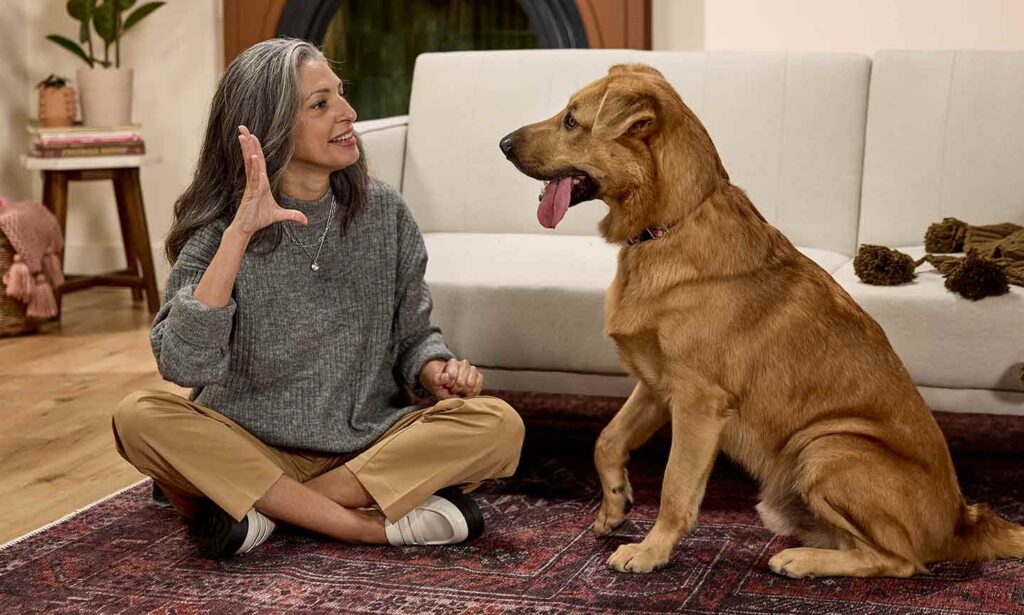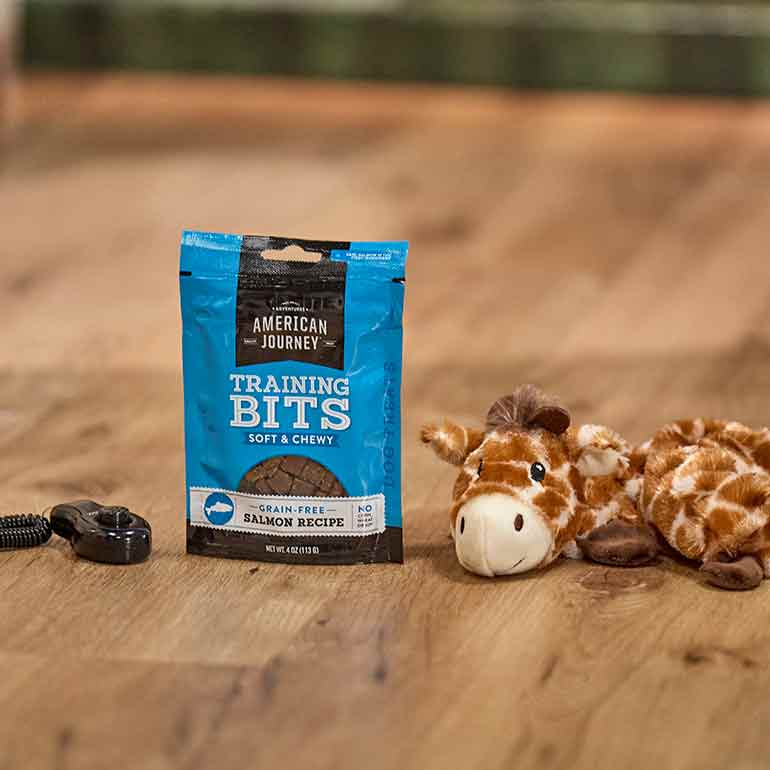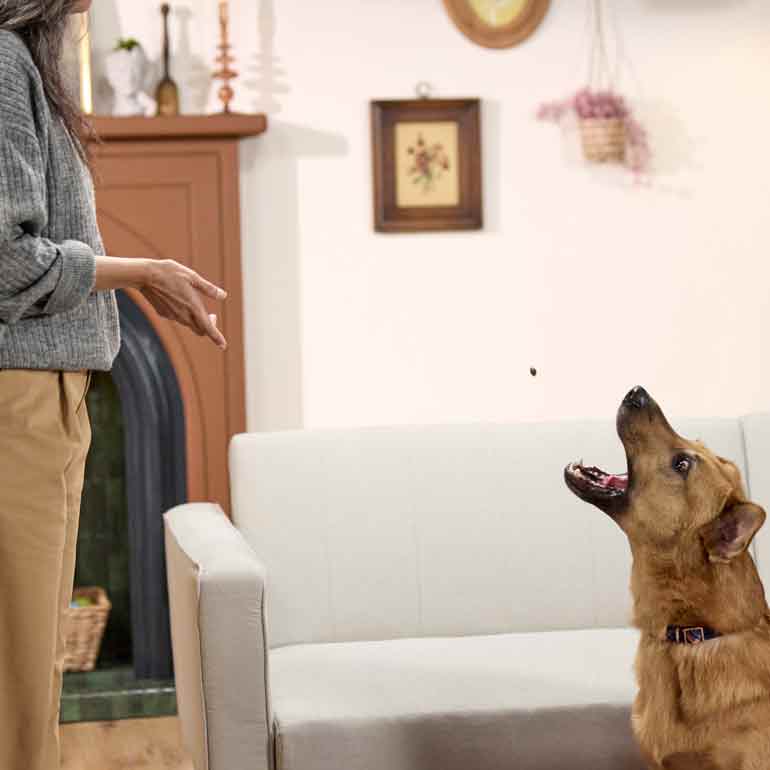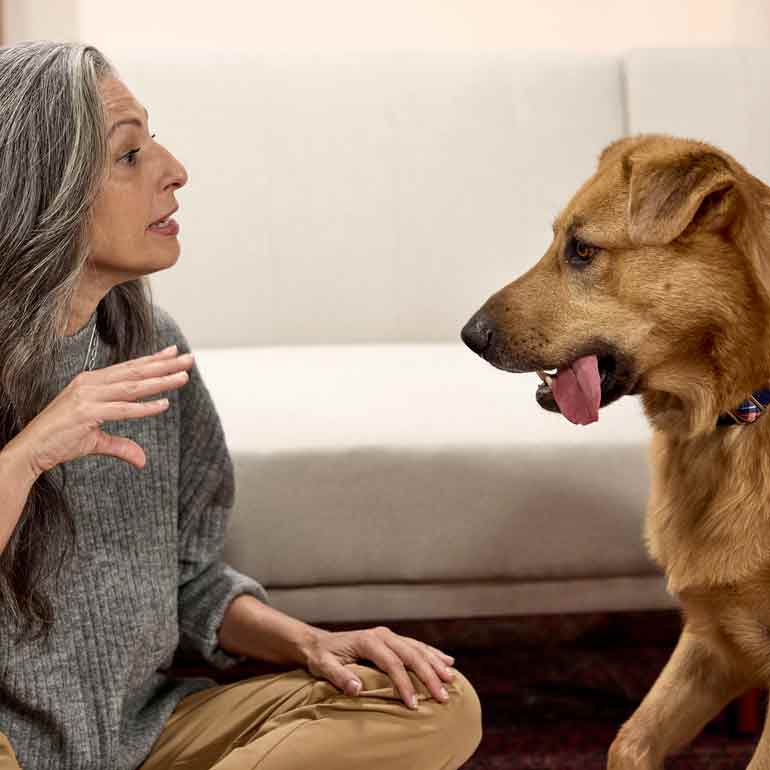Unwanted dog barking can be frustrating. But your dog barking when you prompt them to do so? Unspeakably cute and impressive! “Speak” is one of those fun tricks (like “roll over”) that makes life with dogs so fun. Most dogs can learn a speak command within a few training sessions. Play your cards right, and you can even teach a quiet command while you are at it!
One more reason to teach this new trick: Teaching a dog to do a single bark on cue can also help curb excessive barking. Ready to try it? Read on!
In This Guide
How to Teach a Dog to Speak
1 Gather Your Supplies
You only need a couple things to teach a dog to speak:
- Tasty dog treats (use small treats, or cut larger treats into small pieces)
- A clicker (optional)
2Trigger Your Dog to Bark
To teach a dog to speak, you need to start by getting the dog to bark. You know your dog best, so think about what gets a reliable woof out of your pooch. Do they bark when you pick up the leash? How about when the doorbell rings or when someone knocks at the door? Or maybe they start to woof when you pull out their favorite toy.
Once you’ve figured out your dog’s bark trigger, aka the thing that gets your dog barking, grab your dog treats and get ready for action!
3Reward Your Dog for Barking
Now that you know your dog’s bark trigger, do that thing—but be ready to thank your dog and “mark the bark” as soon as the barking starts. To mark the bark, you can:
- say “thank you” (or “good dog” or any other short phrase or word you want)
- click a clicker (if you already use clicker training)
- hold up a treat
In this step, you’re trying to teach your dog things: First, that they’ll get positive reinforcement—in the form of a tasty treat—when they bark. Second, that they should limit the barking to a single bark (so it’s easier to control).
So, here's a quick summary of how this step goes:
- Do the bark trigger
- Dog barks once
- Mark the bark
After you mark the bark, feed your dog a treat. This will both provide positive reinforcement for the single bark, encouraging your dog to bark just once and then stop.
Here's your new set of steps:
- Do the bark trigger
- Dog barks once
- Mark the bark
- Feed a treat
Repeat this step until you are confident your dog will bark just once and then stop after the bark trigger.
4Add a Verbal Command or Hand Signal
Now it’s time to teach your new speak command. This command should be the word, phrase or hand signal you intend to use to let your dog know to bark. Many pet parents use the word “speak,” but it’s really up to you what you choose.
To teach the speak command, follow this pattern:
- Give your new speak command
- Half-second pause
- Do the bark trigger
- Dog barks once
- Mark the bark
- Feed a treat
As you do this, pay attention to your dog’s body language. With repetition, most dogs will get ready to bark as soon as they hear or see the speak command.
If your dog looks ready to bark as soon as you give the hand signal or verbal cue, pause for an extra half-second to see if they will bark without the bark trigger. If they do, that means they’re starting to learn the new speak command! You may need to practice for a few days before they get really confident, but you’re on the right track.
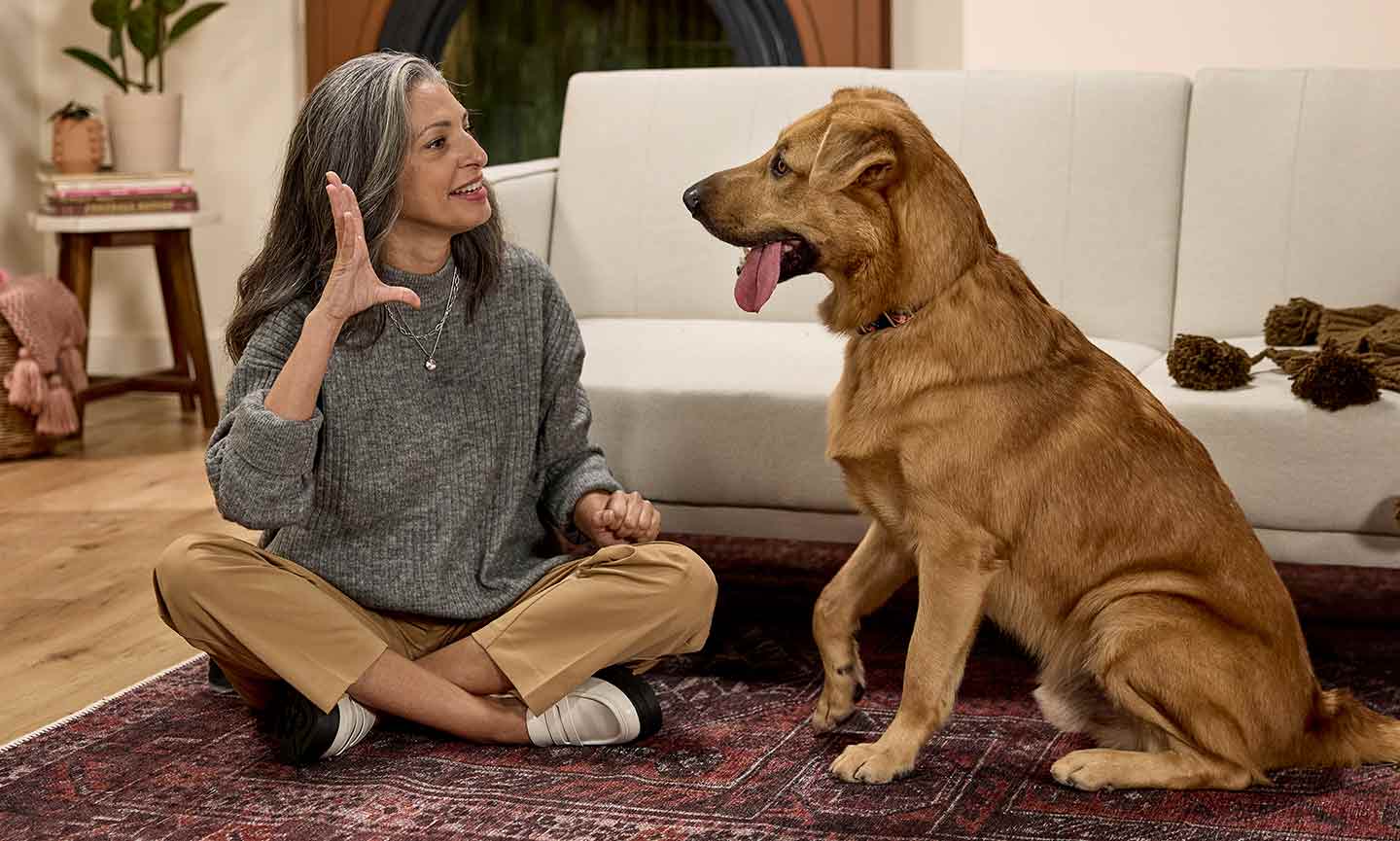
5 Use Only the Speak Command
Now that your dog has learned the speak command, you can start to give the hand signal or verbal cue, then mark the bark, and finally feed a treat. Show your new dog trick off to your friends, and practice it here, there, and everywhere!
Here’s a quick summary of the steps, once your dog has learned the cue:
- Give the speak command
- Dog barks once
- Mark the bark
- Feed a treat
Teaching the Quiet Command
If your dog is from a barky breed, or just barks a lot in a “talky” kind of way, you may want to teach a quiet command. To do this, follow the steps above—but instead of marking the bark with a clicker, “thank you,” etc., say “quiet” right after your dog barks, and then feed the treat. Here’s a simple summary of what to do:
- Do the bark trigger
- Dog barks
- Say “quiet”
- Dog stops barking
- Feed a treat
After a little practice, your dog will stop barking when they hear “quiet,” since they know a treat is coming. You can then use the quiet command to get some peace.
Why Is My Dog Barking Excessively?
While teaching the quiet command sounds easy, it doesn’t always work, because sometimes barking is about more than just chatting. If your dog barks a lot, start by researching your dog's breed and their barking tendencies. Some dog breeds tend to bark more than others. This will help you sort out whether the barking is normal behavior or a sign that something more serious might be going on.
Excessive barking can be your canine buddy’s way of expressing deep-seated dog needs. If those needs are not being met, asking your dog to be quiet will not do the trick.
Barking can indicate that your dog is suffering from:
- Separation anxiety
- Pain
- A noise phobia
- Generalized anxiety
If your dog seems anxious, or you are having trouble curbing excessive barking, start by consulting your vet. With their expertise in veterinary medicine, they can help rule out medical causes.
If your dog has gotten a clean bill of health but is still barking excessively, the next person to talk to is a certified professional dog trainer — a CPDT-KA, CBCC-KA, or CDBC. These professionals have expertise in dog training and behavior modification and can help you figure out the best way to use positive reinforcement to teach your dog to be quieter. You can find a professional dog trainer near you using the Certification Council for Professional Dog Trainers’ directory.
More Dog Training Tips
Share:
